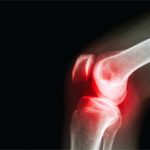Disease-modifying drugs are not currently available for treating knee osteoarthritis (OA); therefore, prevention strategies focus on patient risk factors, such as obesity and injury, for reducing the burden of disease. Understanding their personal risk factors may influence patients’ OA prevention efforts.
To measure patients’ perception of their own risk of developing knee OA, Elena Losina, PhD, and colleagues from Brigham and Women’s Hospital and Harvard Medical School, Boston, developed a personalized risk calculator that uses demographic and risk factor information to estimate knee OA risk. In a recent study, published in the August 2017 issue of Arthritis Care & Research, researchers tested the efficacy of the calculator on that accuracy of risk perception. Researchers also used contemplation ladders to measure a patient’s willingness to implement behavior changes that would prevent weight gain, such as increase exercise, improve diet and control weight—all established risk factors for knee OA.
The study included 375 participants, recruited through the Amazon Mechanical Turk, who were randomized to use the personalized risk calculator, OA Risk C, or receive general OA risk information (control group). Subjects estimated their 10-year and lifetime risk and responded to contemplation ladders at baseline and after the interventions. At baseline, the mean age of participants was 32 years old with a mean body mass index of 27. Subjects in both study arms had an average 3.6% chance of developing symptomatic knee OA in the next 10 years and a 25.3% chance of developing knee OA in their lifetime.
The Results
“Prior to the intervention, both groups highly overestimated their risk of developing knee OA in 10 years and over the course of their lifetime,” write the authors. “Use of the personalized risk calculator facilitated more accurate perception of knee OA risk.”
For the intervention group, the perceived 10-year risk decreased by 12.9% (95% confidence interval [CI] 215.7, 210.1)—from 25.4% (95% CI 22.0, 28.8) to 12.5% (95% CI 10.0, 15.0)—and perceived lifetime risk decreased by 19.5 % (95% CI 222.9, 216.0) to 28.1% (95% CI 25.2, 31.0). However, participants in the control group did not report change in their risk perception. Their perceived 10-year risk increased by 0.8% and their perceived lifetime risk decreased by 0.9%.
Additionally, the study found that participants in the intervention group were more likely to move to an action stage on the exercise contemplation ladder: 26.9% of risk calculator subjects moved into an exercise action stage, compared with 13.6% of control subjects (relative risk 2.1 [95% CI 0.9, 4.7]). However, the authors note, “For [the] weight control and diet contemplation ladders, the data did not suggest that the intervention increased subjects’ willingness to move to an action stage (RR 1.0 and 1.3, respectively).”
The authors note the need for more research to leverage the potential of the risk calculator as a public health tool. They note that some risk prevention, especially related to injury, may be most effective for a younger population. “This study suggests that viewing personalized risk information for knee OA motivates subjects to be willing to change their exercise habits,” write the authors. “As the risk calculator intervention is brief, implementing further interventions after viewing personalized risk may allow subjects to act on this momentum.”
Losina E, Michl GL, Smith KC, et al. Randomized controlled trial of an educational intervention using an online risk calculator for knee osteoarthritis: Effect on risk perception. Arthritis Care Res (Hoboken). 2017 Aug;69(8):1164–1170. doi: 10.1002/acr.23136. [Epub ahead of print]


